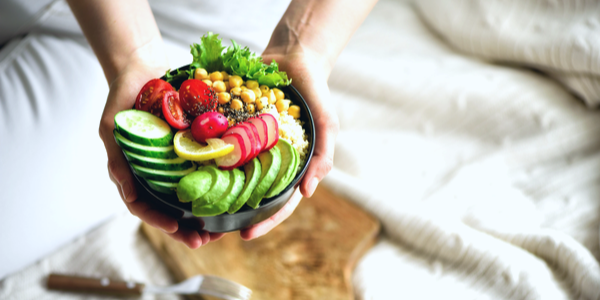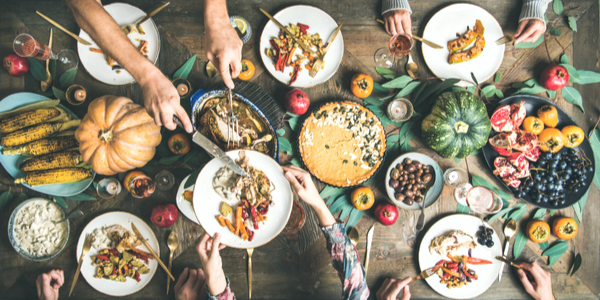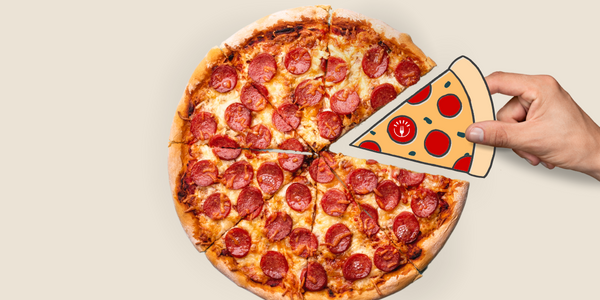
What is clean eating? You’ve probably heard the term everywhere these days, but the definition seems a little more elusive. Luckily, with a few simple fundamentals, you can make clean eating a part of your life today (and even work towards health goals like weight loss).
Read on to learn how to eat clean, including a clean eating plan for weight loss.
What Is Clean Eating?
What is the definition of clean eating? Turns out, not everyone agrees. Most experts suggest that the basis of a clean eating diet contains two main tenets:
1. Increasing intake of fresh fruits and vegetables
2. Avoiding processed foods
Some dieters take the clean eating lifestyle too seriously and extend the definition to mean cooking all food from scratch, completely eliminating refined/added sugars, and only eating foods in their most “pure” or “natural” state.
The problem with terms like these, and the term “clean eating” itself, is that the definitions vary widely depending on who you ask. Studies show that while many young people perceive clean eating as positive, there is little recognition of the risks of dietary restriction as they develop eating habits for adulthood.
So, what is the “healthy” view of clean eating? At its essence, clean eating for well-being is a return to real foods. At the core, clean eating seeks to restore balance in the body by nourishing it with more whole, plant-based foods and less refined, processed products.
Is Clean Eating Good for Weight Loss?
Clean eating can be helpful to lose weight when truly healthy habits are employed. Research has shown, particularly among women, that those who adhere to dietary advice from “clean eating” websites have significantly higher levels of restricted eating.
In other words, if you are wanting to try clean eating for weight loss, it is important to go about it the right way. A good place to start is by expressing your desires and concerns to your healthcare team. A registered dietitian (RD) is qualified to help you begin your clean eating journey in a way that embraces eating in a healthy way instead of restricting it.
Clean eating for weight loss can be a great step in the right direction. Since a clean eating diet focuses on fruits, vegetables, and minimally processed food, you’ll likely be eating less high-fat, high-carbohydrate meals. Research on low-carbohydrate diets suggests they can be effective in improving weight loss and related health markers (i.e. HDL and TG lipid profiles).
The short answer is “yes”, clean eating can be good for weight loss. However, you’ll need to begin this pattern of eating in partnership with qualified health professionals to make sure your health stays the number one priority and goal throughout the process.
Even when eating “natural” foods, you need to attend regular check-ups with your doctor and dietitian to make sure your wellness is in check.
5 Ways To Eat Clean for Wellness & Weight Loss
Where to begin? Start clean eating today for improved weight loss in the future. Pick one of the simple tips below to make important, intentional shifts in the right direction.
1. Live Clean
If you are eating clean foods but the rest of your lifestyle is filled with toxins or toxic habits, you may not achieve the results you were looking for. Clean up your life by getting enough exercise and sleep, and find healthy ways to manage stress (just to name a few areas).
2. Stay Simple
Find foods you like with just a few simple ingredients rather than lots of artificial ingredients. Luckily, more and more food brands are offering healthier alternatives to their best-sellers!
For instance, when selecting peanut butter, look for products with only peanuts and a touch of salt. The same principate applies to all kinds of nut butter and foods for that matter!
3. Invest the Time
Clean eating practices often include more home-cooking and increased intentionality in grocery shopping. It’s important to make time for these activities in your schedule, especially if your current day consists of back-to-back busyness and events.
Many people find it helpful to block out an hour or two in their weeks to make space for clean eating and help them achieve their weight loss goals.
4. Keep It Realistic
If you are used to eating fast food every day, switching over to completely clean eating may not be manageable. Instead, make simple yet significant swaps to start with.
For example, instead of eating out every day for lunch, begin packing a healthy lunch every other day for a week. Do this until you feel like that is a healthful habit that fits into your unique lifestyle and makes sense.
5. Start with Snacks
Many people eat balanced meals but snacks are where they are sidetracked. Take a look at your snacks and see if they are designed to nourish or just a last-minute bite to quench a craving.
When meal planning, don’t forget to take time to design well-balanced snacks with plenty of fiber and lean protein to keep you feeling full.
Bonus Clean Eating Tip
There are, of course, more than five ways to get started on your clean eating journey. However, our experts find that these five pressure points are where people initially get tripped up.
One last tip is to give yourself room to grow! Clean eating for weight loss, like any goal worth working towards, takes time and effort before you see major results. Support yourself throughout this journey by celebrating the small victories you see along the way.
The Bottom Line on Clean Eating
Clean eating is a broad term, but it usually focuses on eating produce in its purest form and reducing refined or processed products in the diet. With a couple of simple tips, clean eating for weight loss and health can become a reality in your life.
Remember, it’s important to start with small, manageable shifts so that you can maintain and sustain progress towards your goals.
References:
Allen M, Dickinson KM, Richard I. The Dirt on Clean Eating: A Cross-Sectional Analysis of Dietary Intake, Restricted Eating, and Opinions about Clean Eating among Women. Nutrients. 2018;10(9):1266.
Ambwani S, Sellinger G, Rose KL, Richmond T, Sonneville KR. “It’s Healthy Because It’s Natural.” Perceptions of “Clean” Eating among U.S. Adolescents and Emerging Adults. Nutrients. 2020;12(6):1708.
Chawla S, Silva FT, Medeiros SA, Mekary RA, Radenkovic D. The Effect of Low-Fat and Low-Carbohydrate Diets on Weight Loss and Lipid Levels: A Systematic Review and Meta-Analysis. Nutrients. 2020;12(12):3774.
Hultin G. CPE Monthly: Clean Eating —What Does It Really Mean? Today’s Dietitian. Published August 2019. https://www.todaysdietitian.com/newarchives/0819p42.shtml.
Negowetti N, Ambwani S, Karr S, Rodgers RF, Austin SB. Digging up the dirt on “clean” dietary labels: Public health considerations and opportunities for increased Federal oversight. Int J Eat Disord. 2022;55(1):39-48.
Zeratsky K. What is clean eating? Mayo Clinic. Published April 2020. https://www.mayoclinic.org/healthy-lifestyle/nutrition-and-healthy-eating/expert-answers/clean-eating/faq-20336262.







